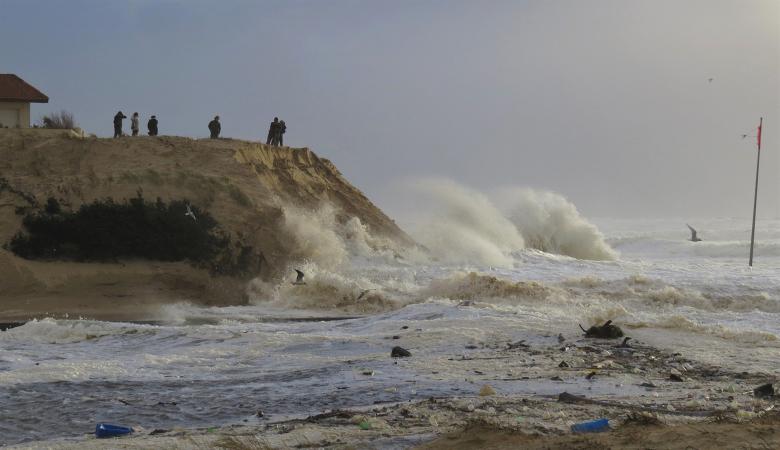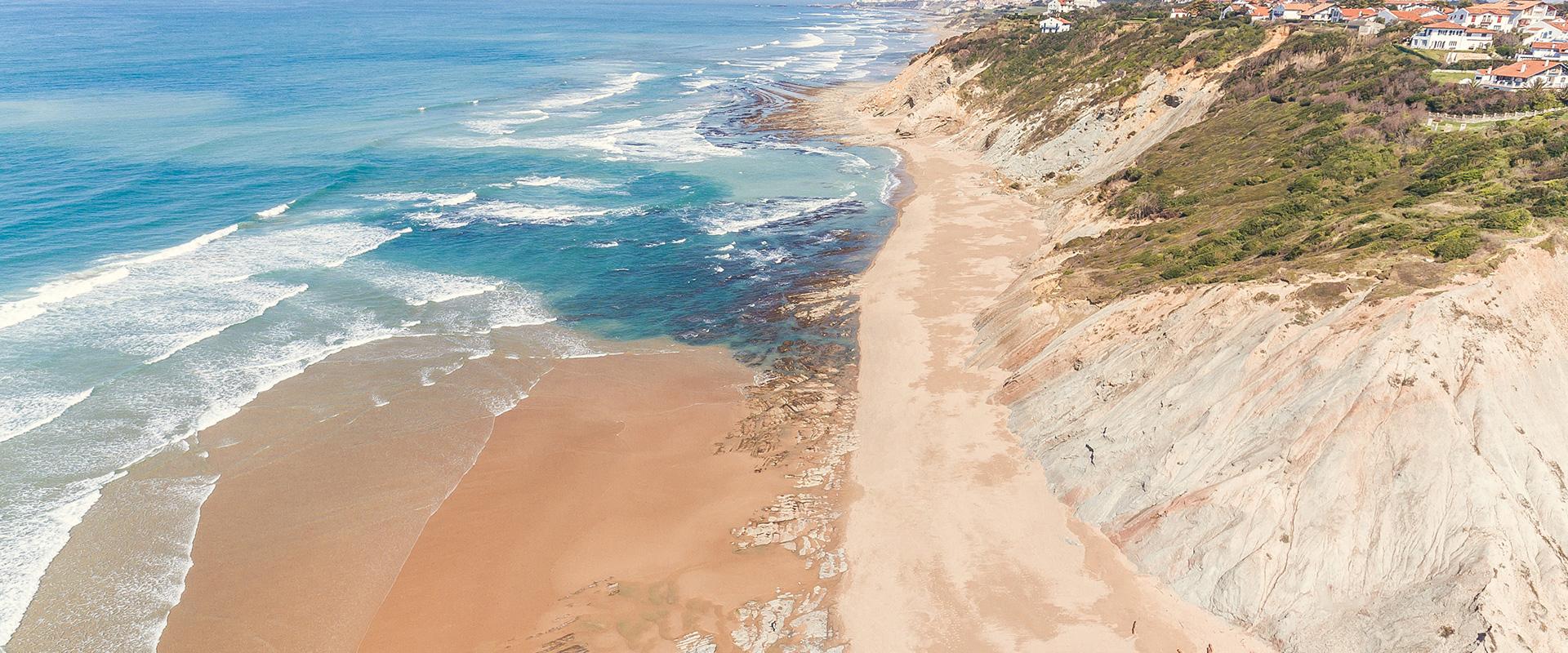
Storm Christine hits Mimizan on 2 March 2014, Nouvelle-Aquitaine.
© Observatoire de la Côte Aquitaine – Bertrand Duport
Which nature-based solutions could be implemented in France in response to rising sea levels?
In many cases, construction and spatial planning have significantly modified French coastlines, increasing their exposure to the effects of climate change.
This has resulted in more frequent flooding, greater coaster erosion and increased salinisation of estuaries and coastal water tables.
In response to this imminent threat, the behaviours and strategies adopted by communities range from inaction to the spatial reorganisation of local areas. However, a number of "tools" can be used in the active prevention of flooding and erosion hazards. They include nature-based solutions (NBS). The aim is to manage, protect and restore ecosystems, responding to societal challenges, while producing benefits for human well-being and biodiversity.
Dykes have their own drawbacks
Historically, coastal protection has relied heavily on the construction of civil engineering works to hold back the sea. Estimates show that 70% of European coastlines are protected by structures of this type, including riprapping, dykes, groynes, breakwaters and floodgates.
However, these ‘hard’ structures have a number of major drawbacks, primarily their cost and the need for greater maintenance. Furthermore, these structures do not adapt to the changing nature of hazards, and may even increase the risk of sudden flooding if they give way without warning.
The deployment of these heavy structures has often been detrimental to the care of natural ecosystems, where these are still present. Healthy, resilient, functional and diverse ecosystems provide many services to human societies. We refer to them as ‘ecosystem services’.
Efficient and cost-effective nature-based solutions
Human activities, climate change and the collapse of biodiversity are altering and threatening coastal ecosystems. Paradoxically, these ecosystems are key to the sustainable resilience solutions for coastal protection that are part of the wider NBS family.
One example is the dunes of the Nouvelle-Aquitaine region. Dune ecosystems play a considerable role in regulating coastal erosion in this region, which has the longest stretch of sand on the French coastline. In addition to their environmental benefits, NBS also have advantages from an economic standpoint.
The maintenance costs of this service, which involves restoring dune ecosystems (e.g. replanting plant species such as marram grass) and implementing management and protection measures (e.g. controlling visitor numbers and providing access paths to prevent the dunes being trampled), are much lower than the cost of installing and maintaining heavy protective structures or endlessly replenishing beaches.
Initial lessons from the pilot sites
A growing number of initiatives are taking shape, in both Europe and France, and we are already seeing encouraging feedback. One example is the Adapto project, run by the Conservatoire du Littoral (Coastal Conservancy) and BRGM. Over a period of five years, the project explored adaptive coastal management solutions at ten pilot sites. This work highlights both the ecological and economic benefits of NBS.





